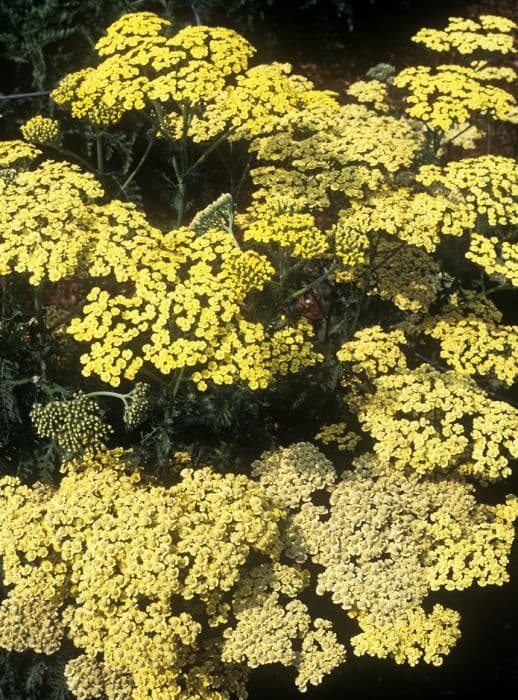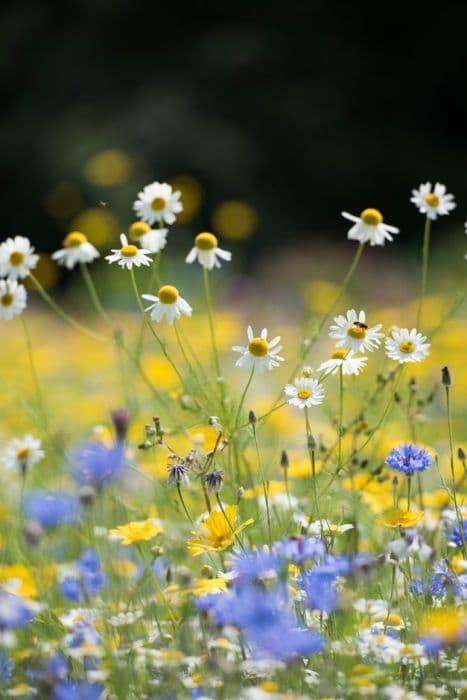Pearly Everlasting Anaphalis margaritacea

ABOUT
The plant known as Pearly Everlasting has a distinctive appearance characterized by clusters of small, white flowers with a pearly appearance, hence the name. Each flower is comprised of tiny, yellowish centers that add a subtle contrast to the bright white bracts which resemble petals around them. The plant's leaves are narrow and lance-shaped with a grey-green hue, often feeling slightly woolly or fuzzy to the touch. Stems of the Pearly Everlasting are erect and branching, bearing the flowers aloft in a way that is attractive to many gardeners and flower enthusiasts. The overall impression is of a light, airy plant that imparts a sense of delicateness and has a somewhat rustic appeal. When in bloom, the Pearly Everlasting can add a touch of whimsy to garden spaces and serves as a lovely dried flower for arrangements, retaining its shape and color well after being cut.
About this plant
 Names
NamesFamily
Asteraceae.
Synonyms
Western Pearly Everlasting, Pearly Everlasting, Pearl-flowered Everlasting, Western Everlasting, Everlasting Flower, Margarite, Moonshine, Cotton-batting Plant, Ladies' Tobacco, Life-everlasting.
Common names
Anaphalis margaritacea var. cinnamomea, Anaphalis margaritacea var. margaritacea, Anaphalis margaritacea var. occidentalis, Anaphalis margaritacea var. yedoensis, Gnaphalium margaritaceum, Helichrysum margaritaceum.
 Toxicity
ToxicityTo humans
Anaphalis margaritacea, commonly known as pearly everlasting, is not listed as a toxic plant to humans. There are no well-documented cases of poisoning by consuming pearly everlasting. However, as with any plant, individuals may have allergies or sensitivities to it, and it is generally not advisable to ingest parts of plants that are not typically recognized as food without thorough knowledge of their safety profile.
To pets
Pearly everlasting is not commonly listed as toxic to pets either. There is no significant evidence suggesting that Anaphalis margaritacea poses a poisoning risk to pets such as dogs and cats. As with humans, pets may have individual allergies or sensitivities to plants, but no specific toxicity symptoms are widely recognized for pearly everlasting in pets. Nevertheless, it is always prudent to prevent pets from ingesting plants that are not intended for consumption to avoid any potential issues.
 Characteristics
CharacteristicsLife cycle
Perennials
Foliage type
Deciduous
Color of leaves
Green
Flower color
White
Height
1-2 feet [30-60 cm]
Spread
1-2 feet [30-60 cm]
Plant type
Herb
Hardiness zones
3-8
Native area
North America
Benefits
 General Benefits
General Benefits- Landscape aesthetics: Pearly Everlasting adds visual interest to gardens with its silver-gray foliage and clusters of white flowers with yellow centers.
- Drought tolerance: Once established, Pearly Everlasting is quite drought-resistant, making it an excellent choice for low-water or xeriscape gardens.
- Easy to grow: It is relatively low maintenance, requiring minimal care once it has taken to its environment.
- Pollinator attraction: The flowers of Pearly Everlasting attract butterflies and bees, providing a food source for these beneficial insects.
- Cut flower use: The blooms are frequently used in dried flower arrangements as they retain their shape and color well.
- Erosion control: With its ability to grow in challenging conditions, Pearly Everlasting can help stabilize soil and control erosion on slopes.
- Native planting: As a native North American species, it supports local ecosystems and is well-adapted to regional climates.
 Medical Properties
Medical Properties- Anaphalis margaritacea, commonly known as Pearly Everlasting, has been traditionally used by Native American tribes as a medicinal plant.
- It is believed to have anti-inflammatory properties and has been utilized in the treatment of ailments such as diarrhea and sore throat.
- The plant has been used to make an herbal tea that is said to help alleviate respiratory conditions and coughs.
- Topically, Pearly Everlasting has been applied in the form of poultices to treat burns, sores, and bruises due to its astringent effects.
- Some herbalists have used parts of the plant to support the immune system and improve overall vitality.
 Air-purifying Qualities
Air-purifying QualitiesThis plant is not specifically known for air purifying qualities.
 Other Uses
Other Uses- Anaphalis margaritacea, commonly known as pearly everlasting, can be used as a natural dye, offering a range of colors from yellow to green depending on the mordant used.
- The fluffy texture of the flowers makes them a suitable stuffing material for small pillows or sachets.
- The dried flower heads can be used in the creation of vegan-friendly paintbrushes or pens when bound to a handle.
- Pearly everlasting can also serve as an indicator species in ecosystem monitoring due to its sensitivity to environmental changes.
- The plant's stems and foliage can be woven into decorative wreaths and garlands when dried, maintaining shape and color for long periods.
- Its silver-gray foliage adds contrast in silversmithing or jewelry-making by providing a unique texture when pressed into soft metals.
- In crafts, the silky fibers of the stems can be used for making paper or as a natural binding material in handmade papers.
- The flowers, when dried, are also sometimes used in potpourri mixes, adding a subtle texture and variety to the blend.
- The plant can be incorporated into natural insect-repelling sachets, as some insects dislike its scent.
- Pearly everlasting's characteristic white bracts can be used as bookmarks, either alone or laminated, due to their durability and thinness.
Interesting Facts
 Feng Shui
Feng ShuiThe plant Pearl Everlasting is not used in Feng Shui practice.
 Zodiac Sign Compitability
Zodiac Sign CompitabilityThe plant Pearl Everlasting is not used in astrology practice.
 Plant Symbolism
Plant Symbolism- Immortality – The Anaphalis margaritacea, commonly known as Pearly Everlasting, is often associated with immortality due to its long-lasting flowers that retain their shape and color even after drying.
- Remembrance – Pearly Everlasting is sometimes used in funerals and memorials, symbolizing cherished memories and the undying spirit of a loved one.
- Persistence – This plant is known for its resilience and persistence, thriving in poor soil and drought conditions, which symbolizes the human ability to endure challenges and persist through hard times.
- Healing – Native Americans have used Pearly Everlasting in traditional medicine for its purported healing properties, symbolically representing healing and the soothing of pain.
- Peace – The white color of its flowers is often associated with peace and tranquility, conveying a sense of calm and serenity.
 Water
WaterPearly everlasting should be watered deeply but infrequently, aiming for about 1 inch of water per week, which is roughly equivalent to 0.6 gallons per square yard of soil. During the growing season, check the soil moisture regularly; the top inch of soil should be allowed to dry out between waterings. Reduce watering as the plant becomes established and rely on natural rainfall whenever possible. In periods of drought or extreme heat, supplemental watering may be necessary to prevent stress.
 Light
LightPearly everlasting thrives in full sun to partial shade. The best spot for this plant would be an area where it can receive direct sunlight for at least six hours a day. Although it can tolerate some light shade, too much shade can lead to weaker growth and fewer flowers.
 Temperature
TemperaturePearly everlasting is hardy and can tolerate a wide range of temperatures but performs best in temperate climates. It can survive minimum winter temperatures down to -20°F and can handle summer temperatures upwards of 80°F. Ideally, pearly everlasting enjoys conditions that are typically found in USDA Hardiness Zones 3 through 8.
 Pruning
PruningPearly everlasting benefits from occasional pruning to encourage bushier growth and remove spent flower heads to promote further blooming. Prune in the late winter or early spring before new growth starts. Deadheading, or removing the faded flowers, can be done throughout the blooming season to maintain the plant's appearance.
 Cleaning
CleaningAs needed
 Soil
SoilPearly Everlasting thrives in well-drained, sandy or loamy soil with a pH range of 6.0 to 7.5. A mix of two-thirds sand or perlite and one-third peat or compost would provide an optimal growing medium. Ensure the soil is fertile by adding organic matter if necessary.
 Repotting
RepottingPearly Everlasting is a perennial that does not typically require frequent repotting. It can remain in the same pot for several years unless it outgrows its container or the soil becomes exhausted. Repotting every 2-3 years should suffice to refresh the soil and encourage healthy growth.
 Humidity & Misting
Humidity & MistingPearly Everlasting prefers a dry to moderate humidity environment. It is tolerant of a wide range of humidity levels found in typical outdoor settings and can manage well without the need for additional humidity when grown indoors.
 Suitable locations
Suitable locationsIndoor
Ensure full sun, well-drained soil, and infrequent watering.
Outdoor
Plant in full sun, well-drained soil; water only when dry.
Hardiness zone
3-8 USDA
 Life cycle
Life cycleAnaphalis margaritacea, commonly known as the Pearly Everlasting, begins its life as a seed, which germinates in spring when soil temperatures and moisture levels are suitable. The seedlings emerge and develop a rosette of leaves at the soil surface, which will continue to grow and accumulate resources through photosynthesis. As the plant matures, it develops a strong root system and erect, branching stems that lead to its next stage of growth, which involves flowering typically from mid-summer to early fall. The flowers are small, white, and clustered in dense corymbs, with a pearly appearance that gives the plant its common name. After pollination, which is often assisted by insects, the plant produces seeds that are dispersed by wind or with the help of animals. The Pearly Everlasting is a perennial, so it completes its reproductive cycle yearly and can survive winters in a dormant state to regrow the following spring.
 Propogation
PropogationPropogation time
Spring - Summer
Propogation: The common name for Anaphalis margaritacea is Pearly Everlasting. The most popular method of propagation for Pearly Everlasting is by seed. It is ideal to sow the seeds in the fall, allowing cold weather to naturally stratify them and prompt germination in the spring. If sowing in the spring, the seeds may require artificial stratification by moist chilling in a refrigerator for about four to six weeks. The cold treatment mimics winter conditions and helps break the seed's dormancy. Once stratified, seeds can be sprinkled on top of a well-draining seed starting mix and lightly pressed into the soil, as they require light for germination. Keep the soil moist but not waterlogged, and with the proper conditions, seeds will typically germinate within two to three weeks.









